An Allotment Manifesto
I’ve had my ups and downs with my allotment, I’ve only had it since September 2018 and prior to that I had a small garden. I focus most on edible things but have had a few successes with flowers. I don't claim to be an expert or know everything but the best thing about gardening is learning, and I can happily say that I am learning (and forgetting) all the time.
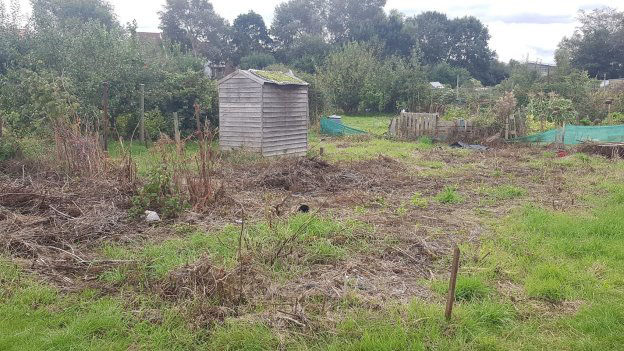
As it was - September 2018
At the height of the pandemic, the allotment was my sanctuary, my outlet and my escape. It brought me closer to the natural world, helped me order my thoughts and connect with other animals in nature, and kept me balanced. We also socialised there, despite the lack of toilets, when restrictions had been eased. Beer cans are useful for putting on the tops of tomato canes after all
Up until this year I’ve been really lucky to be able to share my plot on and off with my friend Mark who is a more seasoned gardener than me, and helped me and my husband Joe to get the ground ready to plant. I have a council-owned half-plot by a relatively busy road which is roughly the size of half a tennis court including the tramlines. While my parents come down to help now and then (they live 60 miles away), and Joe mucks in when the mood takes him, now Mark’s moved away things have become a little overwhelming.
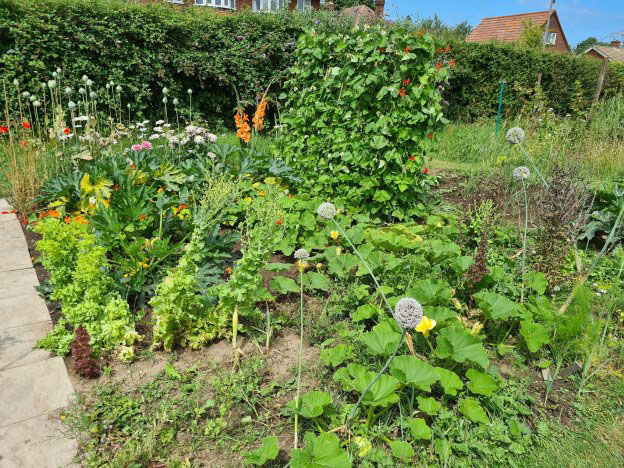
Blazing glory at the height of last summer
In addition to Mark’s departure, as the world has unlocked and my social life has unfurled, at some point last year my commitment to my allotment faltered. The weekends and evenings started to fill with all the things and people I’d missed, and the events that had been rescheduled. While I am thrilled to welcome them all back, my mind and my allotment have become overgrown. I need to regain the peace of mind gardening gave me before and commit myself all over again.
With an awareness that some of you might recognise the challenges I’ve been facing, I’ve written this post as a little manifesto, to outline my goals and philosophy for gardening and to re-define what being a vegan gardener and allotment holder means for me.
- Garden veganically. I have made the decision to live according to my ethics. My allotment can be a reflection of how I want the world to be. Allotments are a place for exchange of ideas and community. I will share ideas and seedlings freely.
- Ask for help if you need it.
- Try not to get disheartened - seasons change, crops fail, weeds grow. There’s always another opportunity to embrace the challenge.
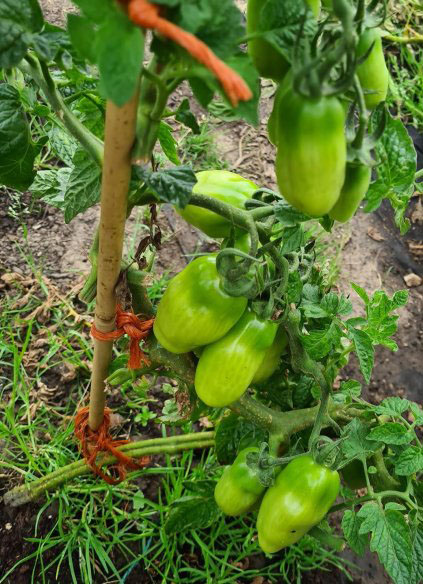
San Marzano tomatoes - a bumper crop in 2020 was followed by complete failure in 2021
- Think mycologically. Like the fungal networks that connect throughout healthy soils, think about yourself as part of the ecosystem. You are working with the soil and cultivating it takes care - the soil thrives when it is host to all sorts of living microorganisms including mycelia. It cannot all be take, take, take; you have to give something back. Don’t use the products of other animals’ labour to improve the soil. Remember to grow more green manure and maintain your compost heap.
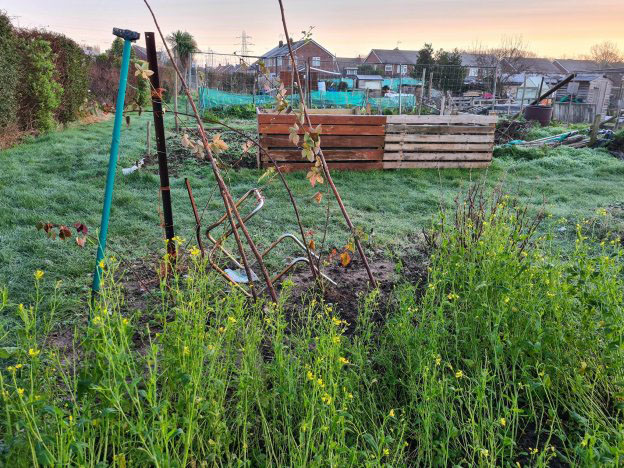
Yellow mustard green manure growing in winter 2020-2021. Green manure keeps the soil covered and suppresses weeds while it’s not being cultivated, and its biomass can be dug back in to improve the soil.
- Variety and harmony are key, to life, to diet and to nature. Monocultures rob the planet of diversity.
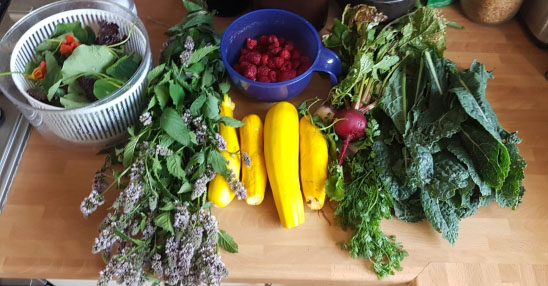
Early harvest, summer 2020 - nasturtium leaves and flowers, white peppermint, yellow courgettes, raspberries, radishes and Cavolo Nero
- Think about the hardest or most expensive veg to obtain and try to grow them - growing from seed takes time and effort but saves money. I’ve grown Cavolo Nero, Queensland Blue squash and Kabocha squash as well as Romanesco cauliflowers which were all delicious!
- We all need friends and loved ones, and so do plants - do more companion planting and ask for help if you need it. Grow plants to encourage helpful insects and birds to visit your plot. Ladybird larvae grow on nettles and grown-up ladybirds predate aphids so it can help to go a bit wild. Nettles can be made into a tea to use as a fertiliser too.
- Be prepared to sacrifice some crops to the slugs and pigeons - nets are your friends. Non-toxic pest prevention is tricky, and slugs and snails hide under everything. I’ve spent quite a bit of time shepherding them into hedgerows.
- Plan ahead - make the most of your sunny windowsills and start enough seedlings off so that you’re prepared to lose a few to the elements - more is definitely better. To save on mess when planting, buy loose, lightweight coconut coir and mix it with vermiculite to cut. Coir is waste from coconut processing so it’s sustainable and you will feel a bit of magic when you mix it all up with some water and it swells to fill your pot.
Tomatoes, chillies and salad on the windowsill early 2021 - the chillies were a roaring success, but all of the tomatoes failed due to rain.
- Get organised, dedicate a notebook, look online and in newspapers for planting tables and mark your calendar with the best times to plant. Don’t forget to write down when you sow things, that way you can anticipate when things will germinate and sow again quickly if they fail.
First year plan (not particularly to scale) visualising the space and recording what’s growing helps with crop rotation.
- Live seasonally and build on it - there’s nothing more satisfying than planting enough food to preserve or to harvest throughout winter. Make friends with Sandor Katz and his fermenting colleagues.
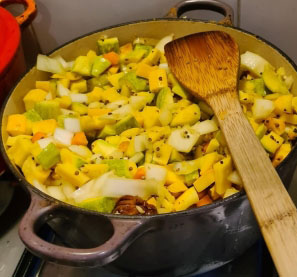
Courgette chutney using grown carrots, onions and Trinidad Moruga Scorpion chillies from the windowsill.
- Remember, while you may crave neatness, you may not swing that way, so embrace the chaos and relax. Just make sure that you follow the rules of your allotment society, so you don't get ‘turfed off’, excuse the terrible pun.
- Avoid single use plastics. They’re bad for everyone.
- Make the most of the space you have and stagger your planting. If you don't have enough time to tend your crops every day, choose slow growing things that don't need a lot of attention. Beans are prolific and easy, a couple of courgette plants will give you more than enough, potatoes take up space and break up the soil - just don’t forget to get them all at the end of the season otherwise you’ll be stuck with an ongoing potato problem.
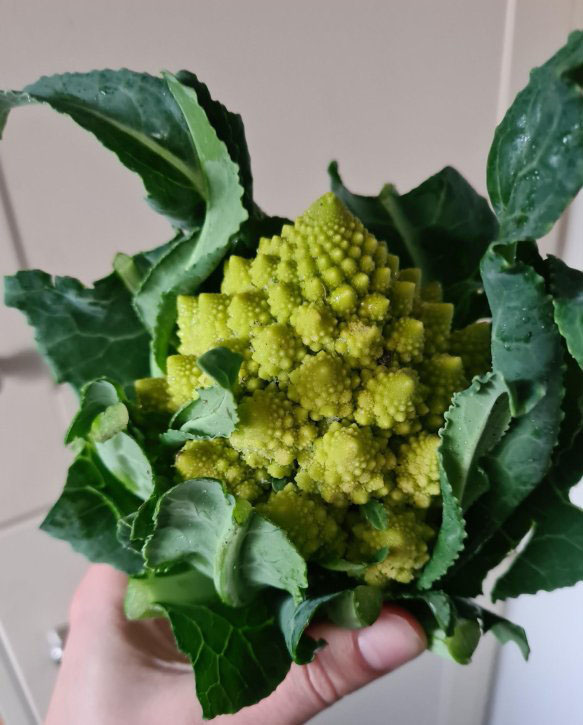
Romanesco cauliflower - tended for months and harvested in the dead of winter - an extremely satisfying feeling
- Most importantly, relax, enjoy yourself and don't take it too seriously!
Grow Green
We’re celebrating National Allotments Week as part of our Grow Green campaign. Transformation of our food system must take place at every level, from your back garden to the farmers that grow our beans and cabbages, to the national and international policies which influence how food is produced. Through the Grow Green campaign, The Vegan Society advocates for a planet friendly, vegan farming system, it pushes for better farming policies to help those growing plant proteins and vegetables in the UK and the EU and shares knowledge on the transition to animal free farming. Find out more on our Grow Green campaign pages.
The views expressed by our bloggers are not necessarily the views of The Vegan Society.

